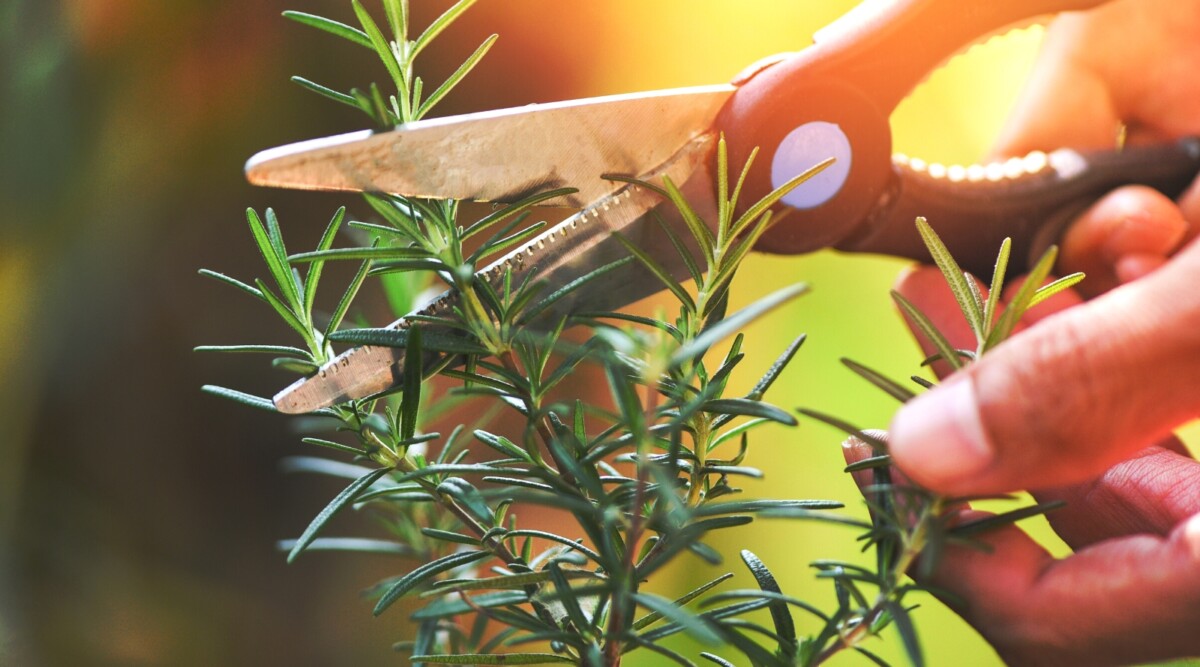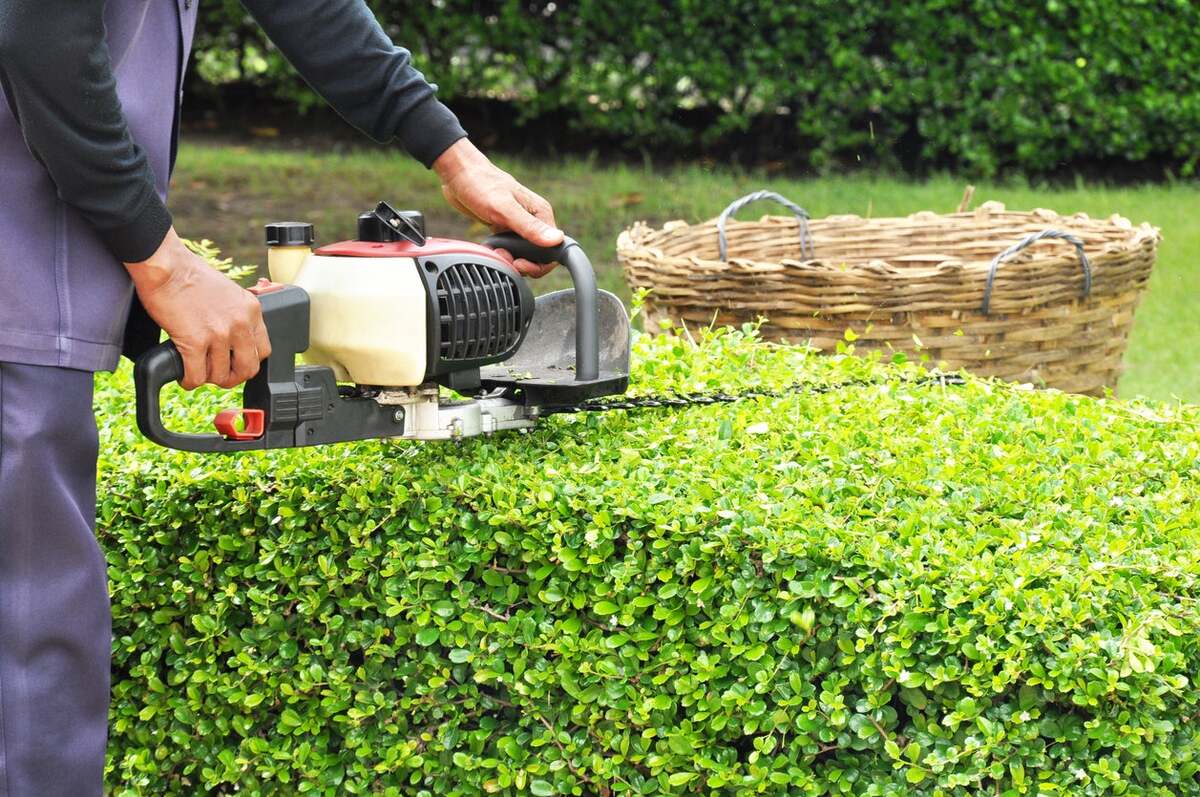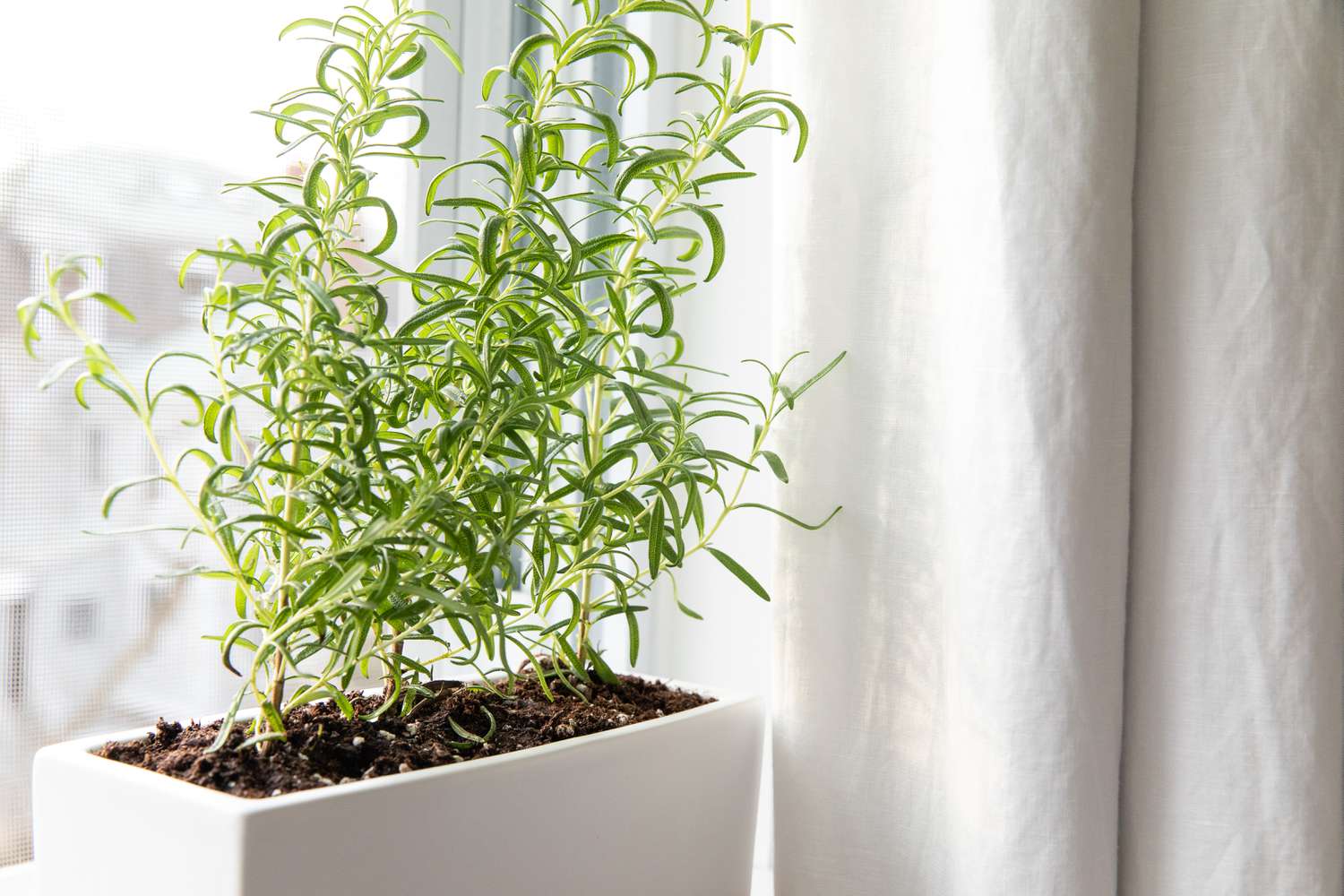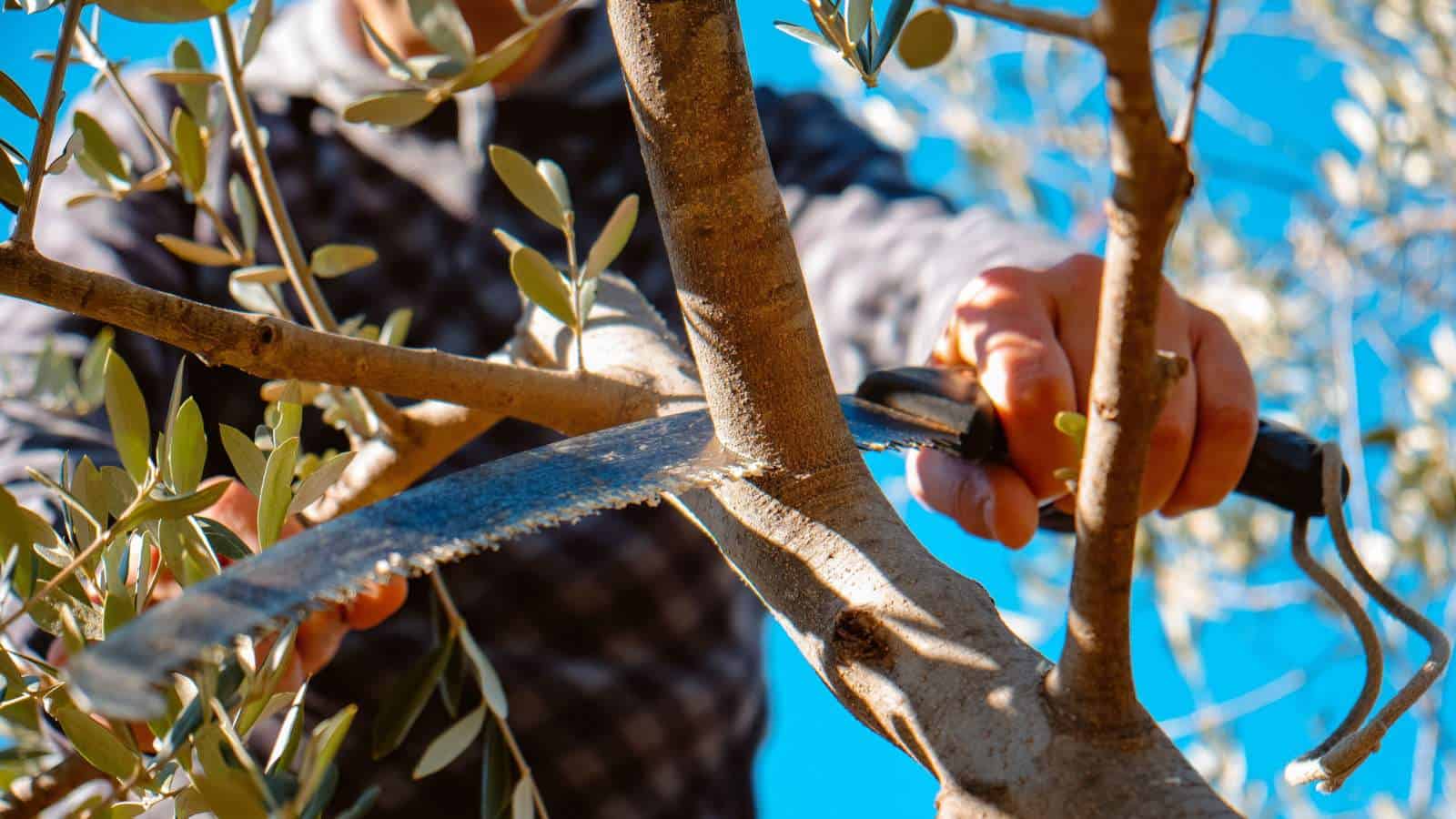Home>Gardening Techniques>Plant Care>How To Trim Rosemary Plants


Plant Care
How To Trim Rosemary Plants
Published: January 29, 2024
Learn how to properly care for your rosemary plants and keep them looking great. Follow our step-by-step guide on trimming and maintaining healthy rosemary plants.
(Many of the links in this article redirect to a specific reviewed product. Your purchase of these products through affiliate links helps to generate commission for Chicagolandgardening.com, at no extra cost. Learn more)
Table of Contents
- Introduction
- Tools and Materials Needed
- Step 1: Assessing the Rosemary Plant
- Step 2: Choosing the Right Time for Trimming
- Step 3: Preparing the Pruning Tools
- Step 4: Removing Dead or Damaged Branches
- Step 5: Shaping the Rosemary Plant
- Step 6: Trimming Overgrown Branches
- Step 7: Pruning the Flowering Tips
- Step 8: Cleaning Up the Trimmings
- Conclusion
Introduction
Welcome to the wonderful world of plant care! If you’re a plant enthusiast, you know how important it is to maintain the health and beauty of your plants. One plant that requires special attention is the rosemary plant. With its fragrant leaves and delicate flowers, rosemary adds a touch of elegance to any garden or indoor space.
Trimming your rosemary plant is an essential task to ensure its longevity and overall appearance. Proper trimming not only helps promote new growth and maintain a compact shape but also prevents diseases and pests from taking hold. In this article, we’ll provide you with a step-by-step guide on how to trim your rosemary plant effectively.
Before we dive into the specifics of trimming, it’s essential to understand the importance of timing. Trimming your rosemary plant at the right time is crucial for its health and growth. Rosemary plants should be pruned in the spring or early summer, just before their peak growth period. This timing allows the plant to recover quickly and develop new growth during the warmer months.
To get started with trimming your rosemary plant, you’ll need a few tools and materials. These include a pair of sharp pruning shears or scissors, a clean towel or cloth, and a container to collect the trimmed branches. It’s essential to use clean and sharp tools to prevent any damage or disease transmission to the plant.
Now that you have your tools ready, we’ll guide you through each step of the trimming process. Follow along, and soon you’ll have a beautifully manicured rosemary plant to enjoy for months to come.
Tools and Materials Needed
Before you begin trimming your rosemary plant, it’s important to gather all the necessary tools and materials. Having these items on hand will ensure a smooth and efficient pruning process. Here are the tools and materials you’ll need:
- Pruning shears or scissors: A pair of sharp and clean pruning shears or scissors is essential for cutting through the rosemary branches. Make sure the blades are sharp to prevent any tearing or crushing of the plant tissue.
- Clean towel or cloth: A clean towel or cloth will come in handy for wiping down the pruning tools between cuts. This helps prevent the spread of any plant diseases or pests.
- Container or bucket: You’ll need a container or bucket to collect the trimmed branches and leaves. This will make clean-up easier and keep your workspace tidy.
- Gardening gloves: Optional but highly recommended, gardening gloves protect your hands from prickly rosemary branches and any potential allergic reactions.
These tools and materials are easily accessible at your local gardening store or online. Once you have everything prepared, you’re ready to move on to the next step: assessing the condition of your rosemary plant.
Step 1: Assessing the Rosemary Plant
Before you start trimming your rosemary plant, take a moment to assess its overall condition. This step is crucial as it helps you identify any dead or damaged branches, areas of overgrowth, or irregular shape that need attention. Here’s how to assess your rosemary plant:
- Inspect the plant: Carefully examine your rosemary plant from top to bottom. Look for branches that appear brown, dry, or wilted. These are likely dead or dying branches that need to be removed.
- Check for overgrowth: Take note of any branches that are excessively long or bushy compared to others. These are signs of overgrowth and may require trimming to maintain a balanced shape.
- Observe the overall shape: Stand back and observe the shape of your rosemary plant. Are there any areas that look uneven or out of proportion? This is an opportunity to reshape the plant and promote a more symmetrical appearance.
Assessing your rosemary plant allows you to develop a plan for the trimming process. By identifying specific areas that need attention, you can proceed with confidence and achieve the desired outcome. Once you have assessed your plant, it’s time to determine the best time for trimming.
Step 2: Choosing the Right Time for Trimming
Timing is crucial when it comes to trimming your rosemary plant. Choosing the right time ensures that the plant can recover quickly and promotes healthy growth. Follow these guidelines to select the perfect time for trimming:
- Spring or early summer: Trimming your rosemary plant in the spring or early summer is ideal. This timing allows the plant to recover and flourish during its active growth period.
- Avoid trimming during extreme weather: Avoid trimming your rosemary plant during extreme hot or cold weather. Trimming during these conditions can put stress on the plant and hinder its ability to recover.
- Wait for new growth: If your rosemary plant is recovering from winter dormancy, wait until you see new growth emerging before you begin trimming. This shows that the plant is actively growing and ready for pruning.
By choosing the right time for trimming, you ensure that your rosemary plant has the best chance of thriving. Now that you have determined the optimal time, let’s move on to the preparation of the pruning tools.
Step 3: Preparing the Pruning Tools
Before you start trimming your rosemary plant, it’s crucial to ensure that your pruning tools are clean and ready for use. Properly preparing your tools will prevent the spread of diseases and ensure clean and precise cuts. Follow these steps to prepare your pruning tools:
- Clean the blades: Wipe down the blades of your pruning shears or scissors with a clean cloth or towel. This removes any dirt, debris, or residue from the previous use and helps prevent the transfer of diseases from one plant to another.
- Disinfect the blades: For an extra level of cleanliness, disinfect the blades of your pruning tools using a solution of one part bleach to nine parts water. Dip a cloth in the solution and wipe down the blades thoroughly. Rinse the tools with water and dry them before use. This step is especially important if you have previously pruned a diseased plant.
- Check the sharpness: Ensure that the blades of your pruning tools are sharp. Dull blades can cause rough cuts and damage to the plant. If the blades are dull, sharpen them using a sharpening stone or consider replacing them with a new pair of pruning shears or scissors.
- Keep a clean towel or cloth nearby: Throughout the trimming process, keep a clean towel or cloth nearby. This allows you to wipe down the blades after each cut, removing any sap or debris that may accumulate. Clean tools promote healthier plants.
Once your pruning tools are clean and sharp, you’re ready to start the trimming process. Properly prepared tools ensure a smooth and efficient pruning experience with minimal stress on the rosemary plant. In the next step, we’ll discuss how to remove dead or damaged branches from your rosemary plant.
Step 4: Removing Dead or Damaged Branches
Trimming dead or damaged branches is an essential step in maintaining the health and appearance of your rosemary plant. Dead or damaged branches not only detract from the plant’s overall aesthetics but can also attract pests and contribute to the spread of diseases. Follow these steps to remove dead or damaged branches from your rosemary plant:
- Identify dead or damaged branches: Carefully inspect your rosemary plant and identify any branches that appear brown, dry, or brittle. These are signs of dead or damaged branches that need to be removed.
- Position your pruning shears or scissors: Place the blades of your pruning shears or scissors at a 45-degree angle, just above the branch collar. The branch collar is the swollen area where the branch meets the main stem. Cutting at this angle helps promote healing and prevents the growth of stubs.
- Cut the branch: Make a clean and precise cut, snipping through the branch just above the branch collar. Avoid cutting too close to the main stem, as this can damage the plant and potentially introduce infections.
- Repeat the process: Continue inspecting and removing dead or damaged branches throughout the rosemary plant. Remember to wipe down your pruning shears or scissors with a clean cloth between cuts to prevent the spread of diseases.
Removing dead or damaged branches allows your rosemary plant to redirect its energy towards healthier growth. It also improves the overall appearance of the plant, giving it a neater and more vibrant look. Once you have removed all the dead or damaged branches, it’s time to move on to shaping the rosemary plant.
Step 5: Shaping the Rosemary Plant
Shaping your rosemary plant is an important step in maintaining its aesthetic appeal and promoting healthy growth. By pruning back excessive growth and maintaining a balanced shape, you can ensure that your rosemary plant thrives. Follow these steps to shape your rosemary plant:
- Assess the overall shape: Stand back and observe your rosemary plant. Identify any areas that look uneven or out of proportion. These are the areas that may require shaping.
- Create a mental picture: Visualize the desired shape or form you want to achieve for your rosemary plant. This will guide you in the shaping process.
- Select the branches to trim: Choose the branches that need to be trimmed to achieve the desired shape. Start by removing any excessively long or unruly branches.
- Cut with precision: Position your pruning shears or scissors just above a leaf node or lateral branch junction. Make a clean cut at a slight angle to promote healing and prevent water accumulation.
- Step back and evaluate: After making each cut, take a step back and evaluate the shape of your rosemary plant. Make further adjustments as needed to achieve a harmonious and balanced appearance.
When shaping your rosemary plant, it’s important to strike a balance between maintaining its natural form and achieving the desired shape. Avoid drastic pruning that can harm the plant or lead to excessive regrowth. With careful shaping, your rosemary plant will not only look visually appealing but also continue to thrive in its healthy environment. In the next step, we’ll cover how to trim overgrown branches for optimal growth.
Step 6: Trimming Overgrown Branches
Over time, some branches of your rosemary plant may become overgrown and need to be trimmed back. By trimming overgrown branches, you can promote healthier growth and prevent the plant from becoming too bushy. Follow these steps to trim overgrown branches:
- Identify overgrown branches: Look for branches that are noticeably longer or bushier than the rest of the plant. These are the branches that require trimming.
- Choose a cutting point: Select a suitable cutting point that is just above a leaf node or lateral branch junction. Cutting at these points encourages new growth and maintains the overall shape of the plant.
- Make the cut: Use a sharp pair of pruning shears or scissors to make a clean cut at a slight angle. Avoid cutting too close to the main stem and make sure to leave a sufficient length of the branch to maintain the plant’s health.
- Step back and assess: After trimming each overgrown branch, step back and assess the appearance of the plant. Make any further cuts if necessary to achieve a balanced and aesthetically pleasing shape.
Trimming overgrown branches helps improve air circulation and light penetration throughout the rosemary plant. This promotes healthy growth and prevents the plant from becoming too dense or unruly. Remember to periodically check for new growth and trim any branches that become overgrown in the future. In the next step, we’ll focus on pruning the flowering tips for optimal blooms.
Step 7: Pruning the Flowering Tips
Pruning the flowering tips of your rosemary plant serves two purposes: it promotes bushier growth and encourages more abundant blooms. By selectively trimming the flowering tips, you can help your rosemary plant produce vibrant and fragrant flowers. Follow these steps to prune the flowering tips:
- Wait for flower buds: Allow the flower buds on your rosemary plant to fully develop before pruning. This ensures that you’re only trimming the spent flowers and not cutting off potential blossoms.
- Identify spent flowers: Locate the faded or wilted flowers on your rosemary plant. These are the flowering tips that are ready for pruning.
- Pinch or cut: Pinch or use sharp pruning shears to remove the spent flowers. Make your cuts just above a set of healthy leaves or a lateral branch to encourage new growth.
- Continue regularly: Regularly check your rosemary plant for new spent flowers and repeat the pruning process. This helps maintain the plant’s energy and diverts it towards producing more abundant and vibrant blooms.
Pruning the flowering tips not only enhances the appearance of your rosemary plant but also stimulates the plant to produce new growth. By regularly pruning the spent flowers, you can enjoy a continuous display of fresh and beautiful blooms throughout the growing season. Keep in mind that rosemary plants are known for their fragrant foliage, so be sure to enjoy the aromatic experience as you prune. Now, let’s move on to the final step of the trimming process: cleaning up the trimmings.
Step 8: Cleaning Up the Trimmings
After you have finished trimming your rosemary plant, it’s important to take the time to clean up the trimmings and ensure a tidy workspace. Cleaning up not only improves the aesthetics of your garden or indoor space but also helps prevent the spread of diseases and pests. Follow these steps to clean up the trimmings:
- Gather the trimmings: Collect all the trimmed branches, leaves, and flowers in a container or bucket. This makes it easier to dispose of them properly.
- Dispose of the trimmings: Depending on your local waste management guidelines, dispose of the trimmings in a compost bin or green waste collection. If the trimmings show signs of disease or pests, it’s best to discard them in a sealed bag to prevent further contamination.
- Clean the workspace: Sweep or rake the area where you performed the trimming to remove any fallen debris or trimmings. This helps prevent pests and diseases from lingering in the vicinity.
- Clean your tools: Before storing your pruning shears or scissors, wipe them down with a clean cloth or towel to remove any sap, debris, or residue. This keeps your tools in good condition and ready for future use.
Taking the time to clean up the trimmings not only helps maintain the overall cleanliness of your gardening area but also reduces the risk of plant diseases and pests. Proper disposal and clean tools contribute to a healthy and thriving rosemary plant. With the trimmings disposed of and your tools cleaned, you have successfully completed the pruning process for your rosemary plant.
Conclusion
Congratulations! You have now learned how to trim your rosemary plant effectively, promoting its health, appearance, and overall growth. By following the step-by-step guide provided in this article, you can confidently trim your rosemary plant with precision and care.
Remember, timing is crucial when it comes to trimming your rosemary plant. Choose the right time, typically in the spring or early summer, to ensure optimal recovery and growth. Assess your plant, identify dead or damaged branches, and remove them to maintain the plant’s health. Shape your rosemary plant by trimming excessive growth and achieving an aesthetically pleasing form.
When addressing overgrown branches, prune them back to encourage healthier growth and maintain a compact shape. Trim the flowering tips to promote bushier growth and more abundant blooms. And finally, don’t forget to clean up the trimmings and properly dispose of them to prevent the spread of diseases and pests.
With the knowledge and skills gained from this article, you can confidently maintain and care for your rosemary plant, ensuring its longevity and beauty for years to come. So go ahead and enjoy the aromatic delights of a well-trimmed rosemary plant, adding an elegant touch to your garden or indoor space.
Happy trimming and happy growing!










